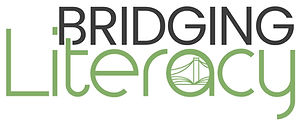What is the heart of your literacy block? In my opinion, it's the mini lesson! In this post, I'm going to teach my top 5 tips for mastering this skill!
Before we dive in, if you are interested in topics such as these, then I’d like to offer you access to a FREE Mini Course. In this course, you’ll learn how to craft a structure to your literacy block and your minilesson. You’ll receive resources to help you plan and a step by step walkthrough of how I craft my lessons. If you are interested in snagging this FREE mini course, all you have to do is head over to buildingtheliteracyblock.com. There you will find the steps to gain access to this limited time course!
Let's get started! If you'd like to watch me chat about this topic, you can watch it here! Make sure to subscribe to my channel so you don't miss any future videos!

Tip #1: Use learning targets to organize your lesson
What exactly is a learning target? They inform the students of what type of learning will occur during the lesson and what students will be expected to demonstrate.
Roughly defined, a learning target can be written in the form of an I can statement. These are written in student friendly language that, as I mentioned earlier, states what learning students must be able to demonstrate.
Your learning targets should be simple, concise, and should not typically include multiple skills or strategies unless the objective is to demonstrate the ability to combine them all.
Examples of learning targets are:
I can use a metaphor to convey an emotion.
I can use important details from the text to support my idea.
Tip #2: Keep Your Lesson Snappy!

Attention spans are getting shorter, so your lessons need to stay snappy.
It is recommended to keep your lessons 15-20 minutes long for 3-6th grade. (See chart.) I have found that the first 10 minutes are the most important as I have many students who are starting to lose focus.
You're probably wondering “How do you make that happen!?”
Be concise, set a timer, and practice!

Tip #3: Have your materials ready.
The time you spend planning and preparing for your lesson gives insight into the effectiveness it will have on your students.
Plan out your materials and have them ready in the location you will administer your lesson.
For instance:
How will you pass out materials for practice?
Will students be expected to write?
Will you have students keep the materials in front of them?
Will you need students to turn and talk?
Will you need to have a copy of a page from your book for students to analyze?

Tip #4: Give opportunities for practice
As you work to prepare materials, make sure that you are offering students opportunities to practice the skill/ strategy.
The goal for any effective minilesson is to focus on getting in and out with your lesson and offering students the ability to practice the skill.
I like to structure my minilesson using the gradual release model. This is where you follow this process:
I DO- Teacher models and talks through his/her thinking.
WE DO- The students assist you. Repeat the same steps from the I DO process but ask for input from the students.
Y'ALL DO- (thanks to the southern girl in me) This is an opportunity for students to work collaboratively on an array of activities. They might highlight a text or turn to partners to discuss. Lot's of options!
YOU DO- Students demonstrate the skill or strategy independently.

Tip #5: Offer feedback
Feedback is the most important component to include in your minilesson.
Feedback is when you are able to make observations of what your students are doing and need to redirect or help clarify misconceptions.
In this case, the feedback you provide during and after your minilesson will happen during the we do/ y’all do and you do portion of the scaffolded model.
Feedback can come in different forms:
#1: Verbal Feedback- Give specific details of what the students are doing, correct or incorrect. So instead of saying: That is wrong. You should say The evidence you chose does not support that character trait. Can you look for evidence that helps the reader know that the character is determined? The more explicit you can be the better!
#2: Use a Rubric- To make things easy, I recommend using a proficiency scale rubric. This type of rubric is aligned to the learning target or objective for that lesson. For example: if my objective was for learners to determine the character trait of a character within a fictional text, then I would create a rubric that would directly align the score students with a 1-4. Each score would articulate the level of understanding demonstrated by the student. This will show learners where they need to go and how they are able to get there.
#3: Use a conference- This is the more time consuming approach but it can be incredibly beneficial when you have an assignment that is more complex and could benefit from a one-on-one. An example would be reviewing a final copy of writing or offering feedback with a rough draft.
Want to watch a video of me sharing this info? You can watch it here! Make sure to subscribe to my YouTube channel so you don't miss anything!
_edited.jpg)